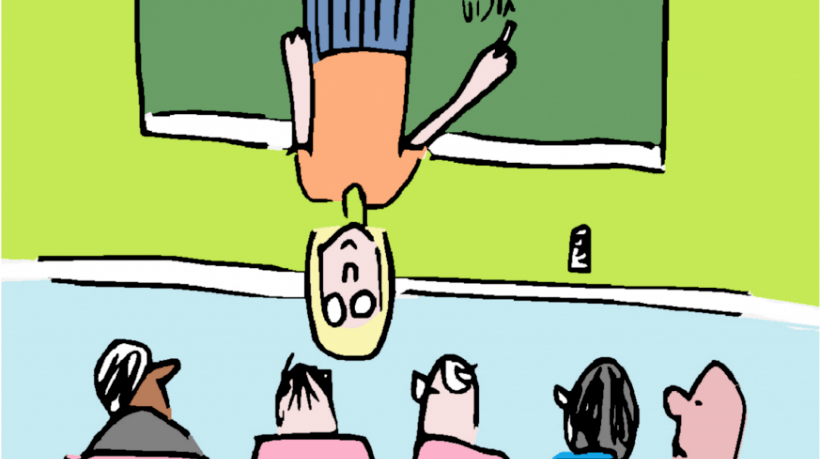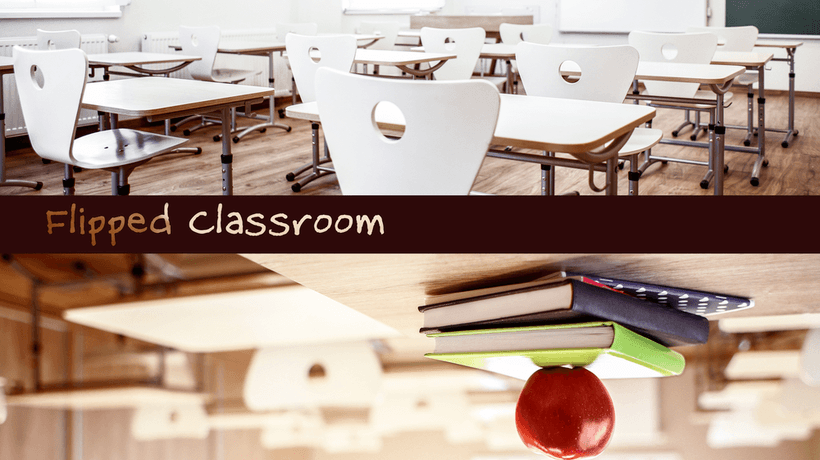5 Ways Totara LMS Can Be Used To Support Flipped Learning
In this article we will discuss the variety of options that Totara LMS offers trainers to build an effective flipped learning environment. For an introduction to flipped learning and how it can be used within a Learning Management System, please see the beginners’ guide.
1. Prepare For Your Session Attendees
Flipped learning not only allows attendees to prepare in advance of their classroom session, but can also provide trainers and facilitators with unique insights into the composition of their upcoming learning group.
Prior to a classroom session, learners can be encouraged to complete a user survey or poll, using the Totara LMS ''Choice" activity to capture their opinion on one or many subjects. The results of this Choice will help the classroom facilitator divide the learners into discussion or debating groups accordingly. This pre-assessment will allow for placement of individuals into groups that will perhaps challenge their beliefs or preconceptions and stimulate a robust discussion or bring together like-minded individuals for a strong debating side.
Learners could also complete a more comprehensive pre-assessment via the Quiz activity so learners can be divided into teams consisting of stronger or weaker, or more experienced or less experienced individuals. Learners with more experience in the subject can help others with the material while reinforcing their knowledge in the subject.
Similarly, learners could complete a Feedback activity so a more rounded view of their needs, wants, and expectations from the classroom session are captured prior to the event. Not only will this provide the session facilitator an idea of their upcoming audience, but individual learners might be teamed up with an appropriate trainer or given relevant practical assignments as a result of their Feedback responses.
2. Create Interactive And Practical Assessments
In flipped learning, where the bulk of the material is delivered prior to the classroom session with discussion and collaborative learning occurring during the face -to- face event, course facilitators are provided the foundations for creating scenario and role play based assessments. Having watched the video, completed the SCORM-based eLearning activity or read the Page activity within Totara LMS, the classroom session can allow learners to prepare their responses in advance and demonstrate their knowledge in an interactive and practical activity.
Case study-, role playing-, and scenario- based activities allow learners to apply their knowledge and experience in a practical and reusable setting. This allows facilitators to assess knowledge and participants to effectively share their knowledge.
3. Open Up Information Silos
Within a large or geographically distributed organisation, certain teams might have ready and open access to certain, pertinent information (such as customer requirements, market trends, or details on a new product), or expertise in a certain area to which other session attendees might not have easy access.
Asking individuals to populate sections of a Wiki activity prior to a classroom session can open up the lines of communication in advance of a team-based activity around those subjects, and help foster an open learning environment. Course managers might provide the foundations for the Wiki by creating pages and sections in advance and ask specific learners to populate the relevant sections. This will facilitate sharing and knowledge distribution in advance of a more collaborative classroom session.
4. Measure Effectiveness
Measuring the success of a classroom session shouldn’t be based solely on the end of session evaluation form. While these provide a fantastic insight into the perceived value of the training by the attendees, it doesn’t capture the effectiveness of the training and knowledge transfer.
By offering activities which can be completed before the classroom session and updated following the face-to-face event, trainers are able to see the difference in the learner’s responses and see how the training session has influenced their answers. Activities such as the Glossary tool within Totara LMS can be used for learners to provide definitions for specific terms or offer a Q&A activity, both pre and post classroom session.
Seeing an improvement and refinement of entries following the classroom event would indicate an effective session, and demonstrate the value of social and collaborative learning activities.
5. Communicate, Contribute, And Collaborate
Following a classroom session, learners will ideally have formed a social network with their fellow attendees and now be able to put faces, skills, and knowledge to a name.
With an understanding of the experience and expertise of their colleagues, future team-based projects and activities will likely be easier for participants and allow for a richer team experience.
Additionally, any course-based communication, using tools such as Totara LMS’s Forums or Chat activities, following the initial face-to-face session, will likely be more robust and constructive given course members will now know and appreciate their peer’s’ contribution to the course and their learning.









